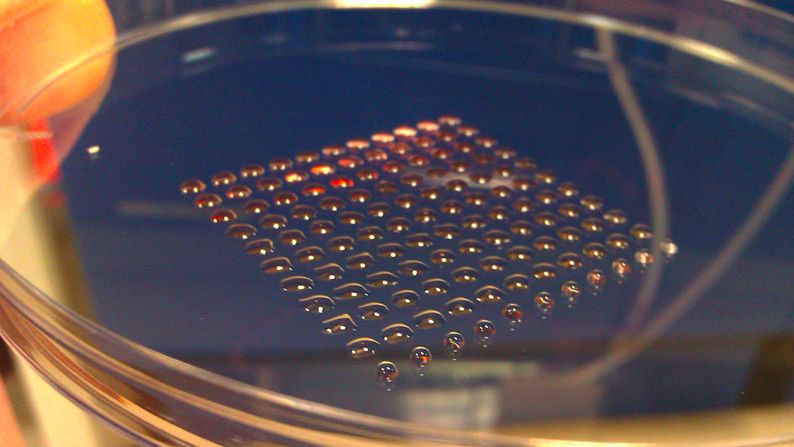Forget guns: researchers working on 3D printer using stem cells as 'ink'
First step

The 3D printer has become infamous for its ability to create somewhat shoddy gun parts, but scientists are hoping it can be used to create life saving organs and tissues as well.
Researches at Heriot-Watt University are experimenting with using embryonic stem cells as the "ink" in a 3D printer, according to a report from Popular Science. The team hopes the techniques will someday be used to construct organs and other tissues for medical purposes.
Though that goal may be a long time away, the scientists have taken the first step by creating a specialized 3D printer that can inject the stem cells without harming them.
It starts with a drop
In the first tests, the team experimented with producing droplets each containing stem cells.
The stem cells float in "bio-ink" housed in custom made reservoirs until researchers use pressurized air to pump the cells through large-diameter nozzles to produce droplets of fewer than five cells.
To produce clumps of cells, the printer first places the live cells on the surface, then overlays them with cell-free bio-ink to create spheroids. Having the ability to precisely control the size and shape of the spheroids is very important, according to the report, because stem cells are finicky about growing conditions.
These first tests were all about creating various spheroids and seeing if the stem cells survived the process, a key necessity even in these early stages. After several experiments, the team found that 99 percent of the stem cells were still viable after running through the printing process.
Sign up for breaking news, reviews, opinion, top tech deals, and more.
There have been previous 3D printing experiments in stem cells before, but this is the first time such delicate cells have survived the process thanks to a specialized valve created by the researchers.
And to show off their cell printing skills, the team printed out a field of dots to form the Heriot-Watt University logo.
Organ printer
Though these initial tests are successful, it will still be a long time until this technique will be ready for medical purposes. But the team has big plans for this organic 3D printing process.
One day these embryonic stem cells could be used to make regenerative organ filler or even manufacture kidneys and livers, potentially eliminating the need for organ donors.
Not only could organs be produced on-demand, the tissue could be tailored to an individual recipient. That would reduce the chance of a body rejecting an organ, and doctors would no longer have to suppress patients' immune systems to help their bodies accept new organs.
These techniques could also be used to reduce our dependance on animal testing. Scientists could just print out human tissue to test new drugs on, instead of relying on animals.
The team will publish a paper on their stem-cell printing work in an upcoming edition of an IOP regenerative medicine journal Biofabrication.